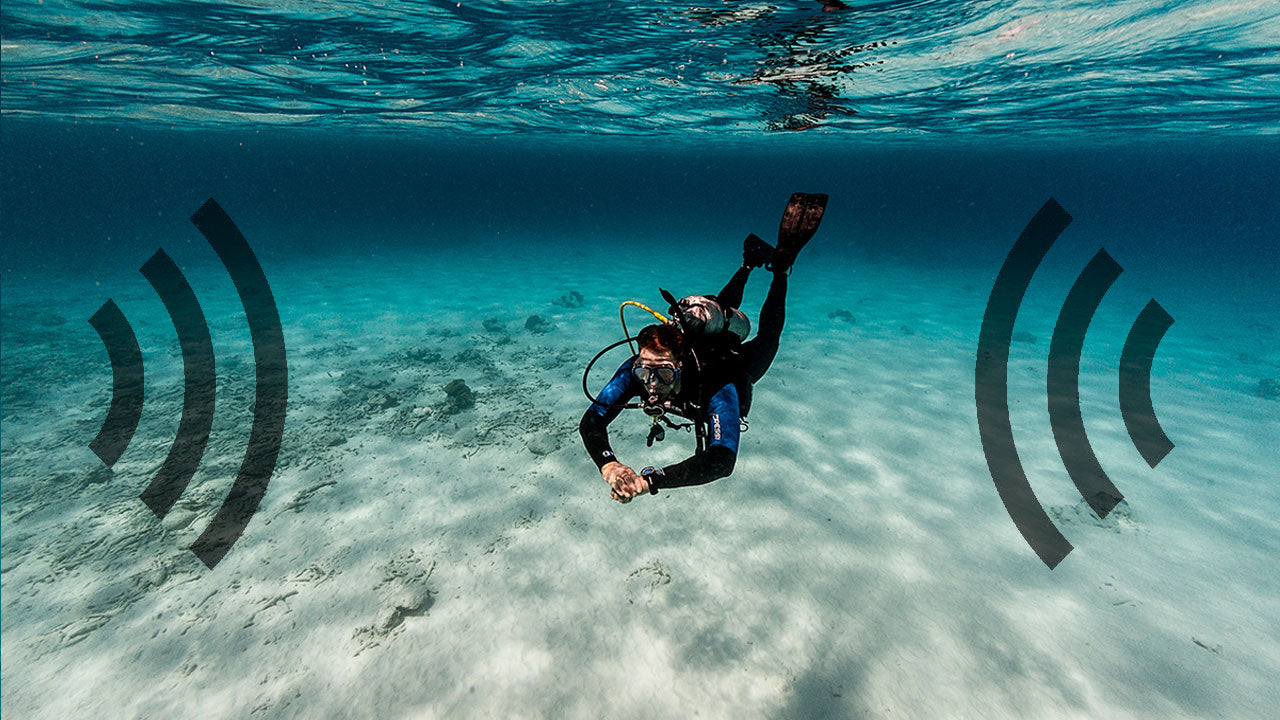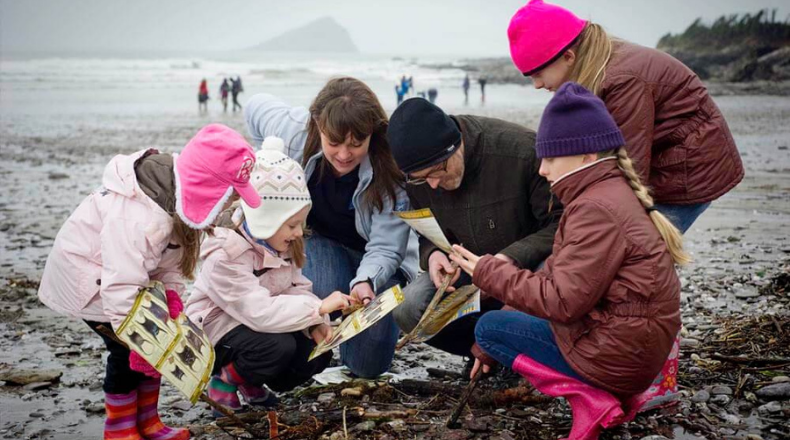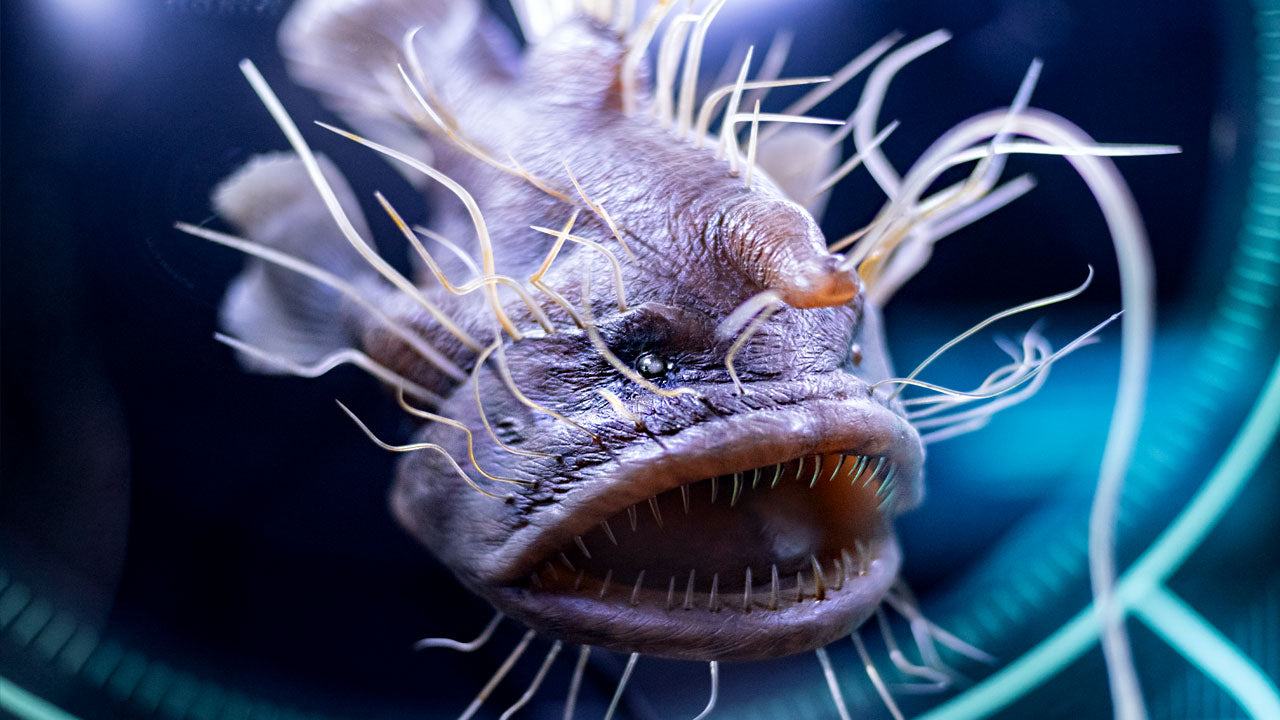Lunar Cycles And the Underwater World

The influence of the moon and lunar cycles on human and animal behavior has been a popular theme throughout history. In addition to being a symbol of romance, the moon in its different phases is associated with proper times for planting, harvesting and even fishing. There are also plenty of myths and fables about various loony effects of our rocky satellite. So, let’s examine some interesting facts surrounding the lunar cycle and its impact on the underwater world in particular.
A lunar cycle is equivalent to the astronomical synodic month and takes place every 29.5 days. During this time the moon completes its waxing and waning phases i.e. goes from new moon to full moon and back to the new moon again. This cycle affects the marine environment directly and indirectly as a result of differences in moonlight intensity and tides.
Tides
First, let’s briefly discuss the creation of tides. A tide is basically the rising and falling of the sea level caused by the combined gravitational forces of the moon and the sun. Tidal movements happen in a more or less predictable rhythm. To be precise, a tidal range typically changes twice daily, since the lunar high tides occur every 12 hours and 25 minutes.
What Are Tide Tables And How to Read Them
If you want to learn more about tidal movements and their importance for divers, read our article What Are Tide Tables And How to Read Them.
Tides and Snook Hatchlings
Some species of fish need tides to help their offspring hatch. Snook, for instance, typically spawn in the near-shore waters. Their eggs, however, must be swept out to sea where they can hatch. After around 24-36 hours the hatchlings, or larvae, are swept back into the shallow waters with a rising tide. Furthermore, there are many other species of fish that time their spawning with the tides to increase their chances of survival. The list includes damselfish, California grunion, Panama sergeant major, etc. Naturally, if not for the effects of the moon causing cyclical changes in the flow of water, all of these fishes would be out of luck.
The Mystery of a Horseshoe Crab
A horseshoe crab is another creature, whose nesting seems to be connected with tidal movements. This archaic-looking species, native to the Atlantic coast, has initially attracted the attention of scientists due to the commercial value of certain components of their blue blood. Interestingly enough, examining the migration and spawning habits of the horseshoe crabs, scientists have discovered that the critters prefer to nest on sandy beaches between the low- and high-tide marks. The female travels up the beach, where she needs to dig her nest and deposit the eggs, whereas the male (typically smaller in size) follows along behind the female and fertilizes the eggs. Furthermore, the studies reveal that the greatest number of spawning horseshoe crabs occurs during the full moon, while the least active period for spawning is the new moon. The reasons for such behavior are not completely clear - it could be the high tides, the moonlight intensity, or, maybe, the horseshoe crabs just enjoy the romantic atmosphere created by the full moon.

Moonlight Intensity
In addition to the gravitational and tidal effects, the moonlight intensity plays an important role in the ambient light experienced in surface waters and shallow-water areas. For instance, the illumination from a full moon can affect different behavioral patterns of marine organisms, in particular, their feeding, spawning, and moulting habits.
Let’s look at some examples.
Moonlight and Swimming Patterns
One of the fairly recent discoveries about different marine animals and moonlight intensity has to do with swimming patterns. Research has shown that sharks tend to stay submerged in deep water during the full moon and surface to the shallows with the new moon. What’s more, the sharks' lunar-linked movements are not unique. Similar patterns have also been observed in yellowfin and bigeye tuna. The most likely explanation of the phenomena suggests that the behavior is linked to feeding. Clearly, moonlight intensity can affect the visibility of marine animals at night greatly. As the light near the surface increases during the full moon phase, some fish may prefer to settle to avoid predation, while other larger species of fish stay mobile to increase chances of catching prey.Even some seabirds are affected by the same factors. One example is the streaked shearwater, a pelagic seabird common in eastern and Southeast Asia. This bird tends to fly for longer periods and land on water more frequently on nights with the full moon than on nights with the new moon. The higher levels of moonlight intensity help seabirds to forage on prey more frequently.
Guided by the Moon
Moonlight, as well as tides can affect the survival of some species. A good example is the olive ridley sea turtle. Surprisingly it was discovered that this creature relies on moonlight for navigation. The female olive ridley crawls up to the beach during the night to lay her eggs. She has to spend hours digging a pit in the soft, quiet sand to hide her clutch of roughly 100 eggs. After she has carefully covered the nest, the mother returns to the water. In around 45-60 days the eggs start to finally hatch, and the baby turtles emerge from their shells. However, each one of them has to face a grave challenge. The 2.5-inch hatchlings must make their way to the sea under the cover of darkness. 3 out of 10 will be snatched up by the seabirds and will never make it to the surf. So, the baby turtles need to be quick and stay on course. For years scientists have believed that it was the sound of crashing waves, guiding the little hatchlings to safety. However, as it turned out the turtles use the light of the moon, the stars and marine bioluminescence to find their way into the surf. Some other species of sea turtles share in such use of moonlight to aid their navigation.
The Polyp’s “Body Clock”
Finally, let’s take a look at how moonlight can influence the existence even of those organisms, who don’t have eyes to see it, namely the coral polyps. The reproduction of coral polyps can occur in three different ways - budding, fertilization within the polyp's own gastrovascular cavity, and broadcast spawning. Within the context of this discussion, the most intriguing way that coral can reproduce is the third one. The process starts with the egg and sperm being released into the sea in single packages called spherical gametes. Once the outer membranes of the gametes dissolve, the eggs can be fertilized. The larvae develop over weeks and are often spread by currents over large distances. Some larvae can settle tens or even hundreds of kilometers from the parent reef, creating so-called connectivity between distant reefs. The only snag in the whole process is that all coral polyps need to spawn at the same time, so that the eggs and sperm can intermingle, creating new combinations of genetic material. For decades, scientists have been stumped as to the mechanism by which coral polyps can time their spawning to achieve the optimum genetic diversity. Finally, it has been discovered that at least one species of coral (Acampora millipore) can sense moonlight, and use it as the triggering mechanism for spawning. But how do corals sense moonlight? A team of international scientists headed by Professor Ove Hoegh-Guldberg of the University of Queensland's Centre for Marine Studies has managed to isolate specific photoreceptor proteins called cryptochromes in these coral polyps that make them sensitive to the bluish light emitted by the moon. It is said that the genes responsible for the cryptochromes are the same as those involved with the regulation of the human body clock.
Although many details of the moon’s effects on the underwater world remain a mystery, certain phases of the lunar cycle can trigger some pretty impressive phenomena. So, next time when you plan a dive, try timing it with the phases of the moon, and maybe you’ll get to witness something truly special.






I would like to time a 7 day trip to Isla Mujeres to maximise my chance of whaleshark and manta sightings in July. What would be the best period ? Two days before and 3 days after full moon ? Or could you suggest a better plan please ?